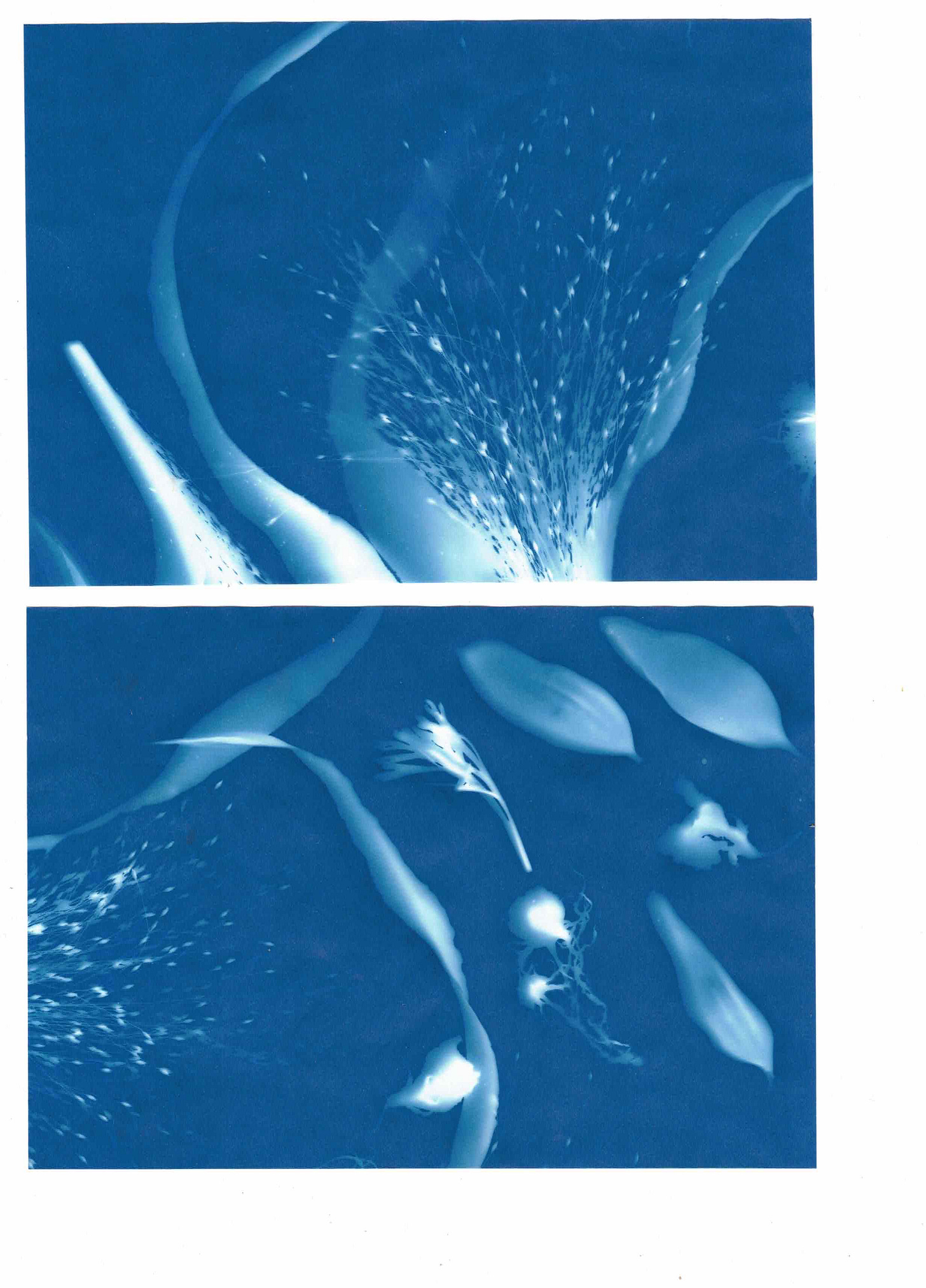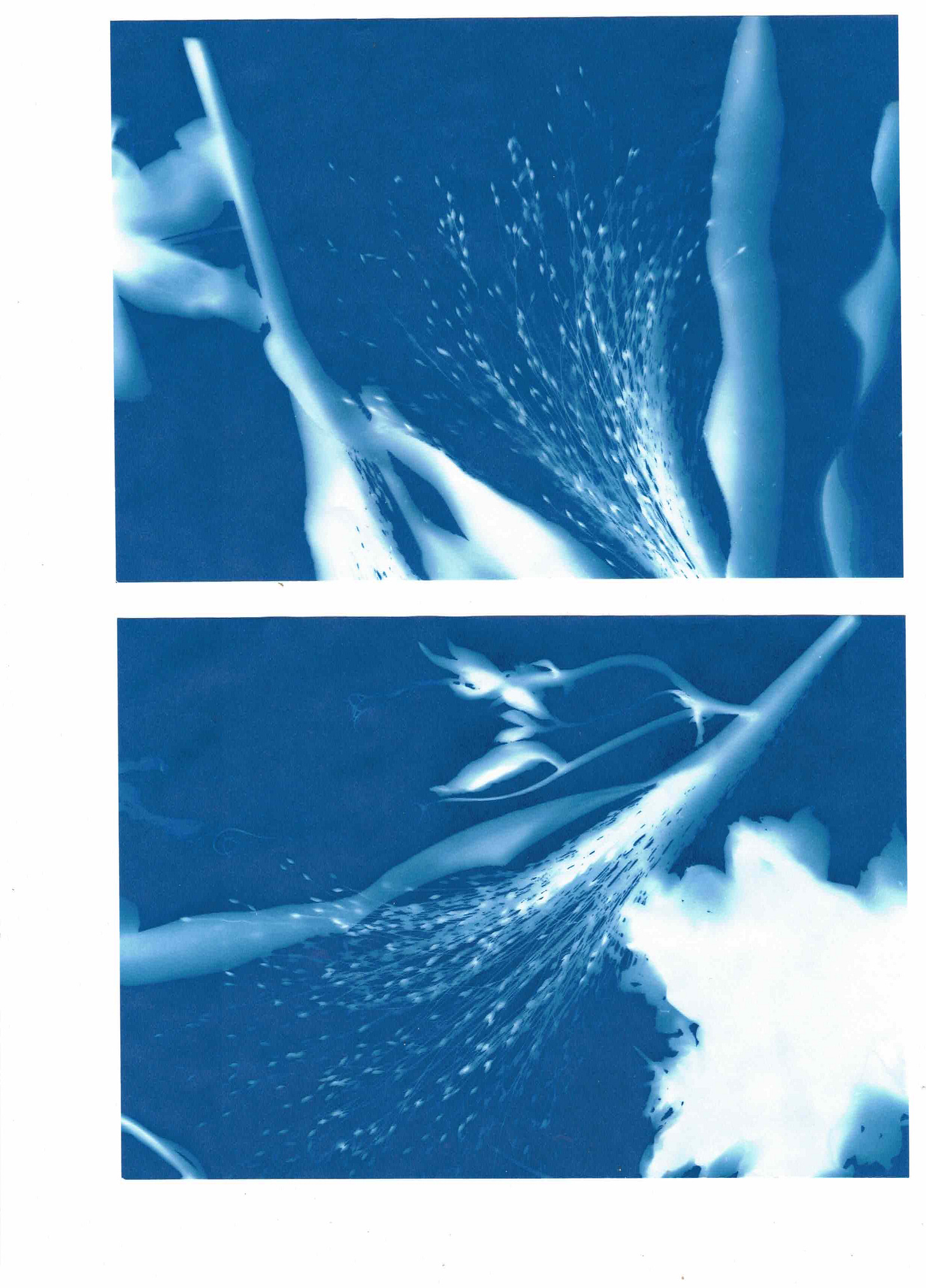It’s fleeting, but still quite vivid
Imprints of wilting, water leaving
“Last forever”, I whisper.
What is a cyanotype?
The cyanotype (from Ancient Greek κυάνεος - kuáneos, “dark blue” + τύπος - túpos, “mark, impression, type”) is a slow-reacting, economical photographic printing formulation sensitive to a limited near-ultraviolet and blue light spectrum, the range 300 nm to 400 nm known as UVA radiation. It produces a cyan-blue print used for art as monochrome imagery applicable on a range of supports and for reprography in the form of blueprints. For any purpose, the process usually uses two chemicals: ferric ammonium citrate or ferric ammonium oxalate, and potassium ferricyanide, and only water to develop and fix.
Thanks, Wikipedia!
Using the treated substrate you put negative film or objects onto the surface, lay it out in the sun for a few minutes, and then rinse it with water to create these beautiful blue prints.
Cyanotypes feel like a fitting way to capture the shapes of the flowers from my wedding bouquet. I love dried flowers with their musty smell of sweet earth, but I want another way to hold them as long as I can. Catching them wilting, in between fresh plumpness and a withered crunch, creates a catalog of time. This moment in my life, which feels really really big, is already fading. I’m happy in its afterglow, but as I return to a semblance of structure, routine, and uncertainty, I already feel it slipping through my fingers. Like a blueprint for a love that I believe to be endless, these cyanotypes of the flowers will outlast and be a reminder of happy memories.










echo abound